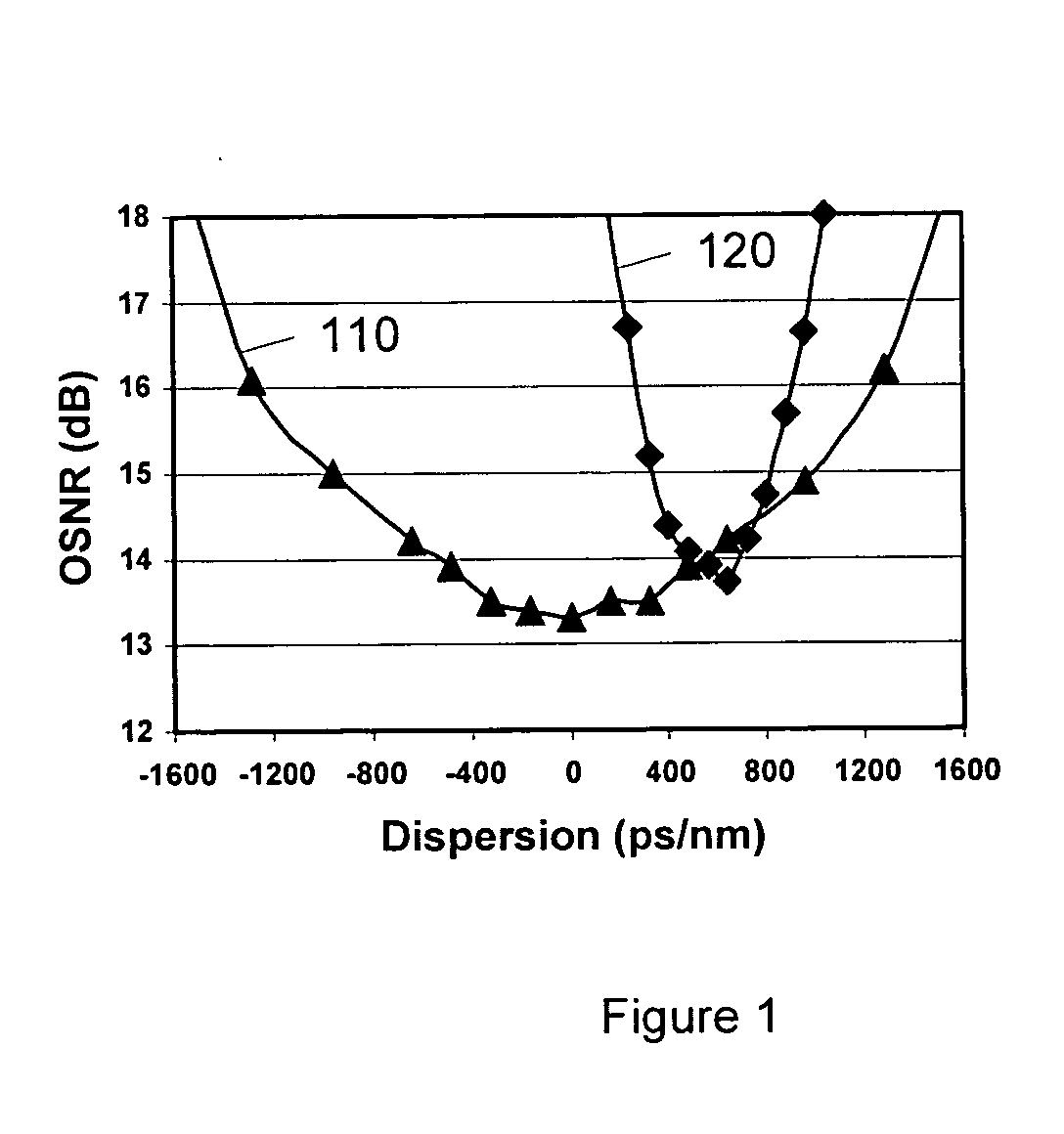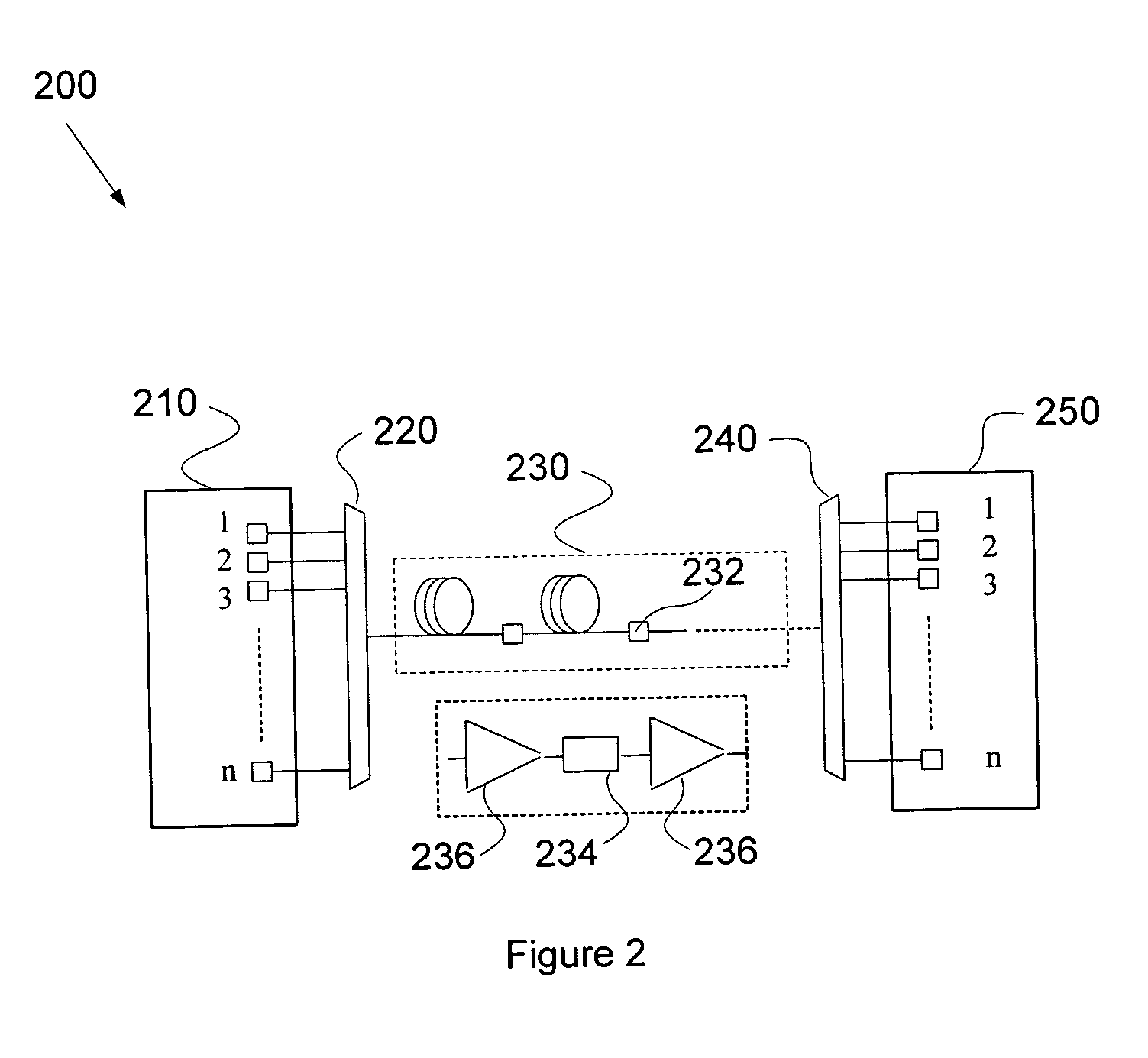System and method for automatic chromatic dispersion compensation
a chromatic dispersion compensation and automatic technology, applied in the field of telecommunication techniques, can solve the problems of deviation from the optimal cumulative dispersion, significant degrade the detectability of the signal, and penalties for the receiver performance, so as to improve the chromatic dispersion tolerance, minimize distortion, and optimize the performance of the transmission system
- Summary
- Abstract
- Description
- Claims
- Application Information
AI Technical Summary
Benefits of technology
Problems solved by technology
Method used
Image
Examples
Embodiment Construction
[0038] The present invention relates in general to telecommunication techniques. More particularly, the invention provides a method and system for automatic chromatic dispersion compensation. Merely by way of example, the invention is described as it applies to optical networks, but it should be recognized that the invention has a broader range of applicability.
[0039] The dispersion limit for a chirp-free 10-Gbps NRZ signal is usually about 1200 ps / nm without dispersion compensation fiber (DCF). With DCF, the total cumulative dispersion can be negative as well as positive. The dispersion tolerance range thus expands to ±1200 ps / nm, and the total dispersion tolerance becomes 2400 ps / nm.
[0040]FIG. 1 is a simplified conventional dispersion tolerance for an NRZ signal. This diagram is merely an example, which should not unduly limit the scope of the claims. One of ordinary skill in the art would recognize many variations, alternatives, and modifications. The NRZ signal may be external...
PUM
 Login to View More
Login to View More Abstract
Description
Claims
Application Information
 Login to View More
Login to View More - R&D
- Intellectual Property
- Life Sciences
- Materials
- Tech Scout
- Unparalleled Data Quality
- Higher Quality Content
- 60% Fewer Hallucinations
Browse by: Latest US Patents, China's latest patents, Technical Efficacy Thesaurus, Application Domain, Technology Topic, Popular Technical Reports.
© 2025 PatSnap. All rights reserved.Legal|Privacy policy|Modern Slavery Act Transparency Statement|Sitemap|About US| Contact US: help@patsnap.com



